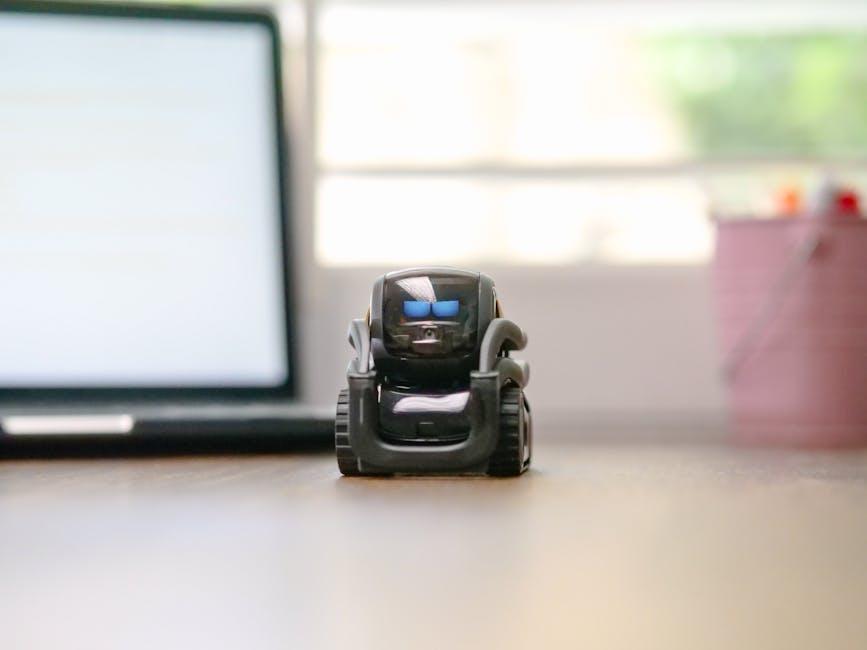In the ever-evolving landscape of work, a silent revolution is reshaping how tasks are approached, decisions are made, and creativity is unleashed. At the heart of this transformation lies the rise of AI-powered tools—intelligent companions that augment human capabilities, streamline workflows, and unlock unprecedented efficiencies. As traditional boundaries blur between man and machine, the modern workplace is being redefined not by replacing people, but by empowering them to work smarter, faster, and with greater insight. This article explores the multifaceted impact of artificial intelligence on today’s professional environments, revealing how technology is not just a tool, but a catalyst for a new era of collaboration and innovation.
Table of Contents
- The Evolution of Collaboration through AI Integration
- Enhancing Productivity with Intelligent Automation
- Balancing Efficiency and Ethics in AI Adoption
- Strategic Steps for Seamless AI Implementation in the Workplace
- Future Outlook

The Evolution of Collaboration through AI Integration
Modern workplaces are undergoing a profound transformation as AI-driven collaboration tools become integral to team dynamics. The integration of artificial intelligence has shifted routine interactions to intelligent exchanges, where automated workflows and predictive insights empower employees to focus on creativity and strategic thinking. From virtual assistants that streamline meeting agendas to AI-powered platforms that suggest relevant documents in real-time, collaboration is no longer just about communication but about enhanced context and efficiency. This evolution paves the way for seamless synergy between human intuition and machine intelligence, elevating productivity across diverse industries.
AI fosters new styles of teamwork by breaking down traditional barriers and enabling unprecedented flexibility. Features such as natural language processing, automated task delegation, and sentiment analysis foster deeper understanding among remote and in-office teams alike. The following table highlights key advancements introduced by AI in workplace collaboration:
| AI Feature | Impact | Example Tool |
|---|---|---|
| Smart Meeting Summaries | Reduces note-taking, highlights action items | Otter.ai |
| Automated Workflow Management | Streamlines task assignments and deadlines | Trello AI |
| Contextual Document Sharing | Suggests relevant files based on discussion | Google Workspace AI |
- Real-time language translation for global inclusivity.
- Predictive analytics to anticipate team needs and bottlenecks.
- Emotion recognition to gauge team well-being remotely.

Enhancing Productivity with Intelligent Automation
Integrating intelligent automation into daily workflows transforms the way teams function by eliminating repetitive tasks and streamlining complex processes. From automated scheduling to adaptive data analysis, AI tools work behind the scenes to enhance efficiency and reduce human error. This shift allows professionals to focus their energy on strategic decision-making and creative problem-solving, ultimately driving innovation and boosting overall workplace morale.
Key benefits of adopting AI-powered automation include:
- Improved Accuracy: Automated systems minimize mistakes caused by manual data entry or oversight.
- Time Savings: Routine tasks are handled swiftly, freeing up valuable hours for more impactful activities.
- Scalability: Automation adapts seamlessly as business demands grow, supporting increased workload with consistent performance.
- Enhanced Collaboration: AI tools facilitate communication by organizing information and tracking project progress in real time.
| Area | Automation Impact | Result |
|---|---|---|
| Customer Support | Chatbots & Ticket Sorting | Quicker Response Times |
| Finance | Automated Invoicing | Reduced Errors |
| HR | Applicant Tracking | Faster Hiring Process |

Balancing Efficiency and Ethics in AI Adoption
Integrating AI into business processes demands more than just a focus on speed and output; it requires a mindful approach to the ethical implications of automation. Companies are increasingly aware that efficiency gains must be balanced with responsibility. This means proactively addressing concerns such as data privacy, algorithmic bias, and transparency. By fostering a culture of ethical AI use, organizations not only mitigate risk but also build trust among employees and clients, ultimately creating a sustainable competitive advantage.
Practical strategies to maintain this balance can be surprisingly straightforward. Consider these core principles:
- Regular ethics audits to identify unintended consequences of AI deployment.
- Inclusive AI design teams ensuring diverse perspectives reduce bias.
- Clear communication with stakeholders about how AI decisions are made.
- Ongoing education to keep employees informed on AI’s potential and pitfalls.
| Aspect | Efficiency Focus | Ethical Consideration |
|---|---|---|
| Data Usage | Maximize data intake for performance | Ensure consent and anonymization |
| Automation | Automate repetitive tasks aggressively | Assess impact on job roles |
| Decision-Making | Prioritize speed and accuracy | Maintain human oversight |

Strategic Steps for Seamless AI Implementation in the Workplace
Embracing AI in the workplace requires a carefully crafted approach, starting with a clear understanding of your organization’s unique needs and goals. Begin by conducting an in-depth assessment to identify where AI-powered tools can provide the most value, whether it’s automating repetitive tasks, enhancing data analysis, or improving customer interactions. Engaging stakeholders early on creates a foundation of trust and transparency, helping teams adapt to new workflows and minimizing resistance. Training programs tailored to different roles ensure that employees feel confident, turning AI from a mysterious black box into an empowering ally.
Effective implementation thrives on continuous evaluation and iteration. Introducing AI tools in phases allows for adjustments that align with the company culture, and feedback loops help fine-tune processes to avoid disruption. Consider these strategic pillars to build momentum:
- Customized Integration: Align AI tools with existing systems and workflows for a smoother transition.
- Scalable Solutions: Choose technology that grows with your organization, effortlessly adapting to new challenges.
- Clear Governance: Establish policies around data security, privacy, and ethical use to maintain trust.
| Step | Key Focus | Benefit |
|---|---|---|
| Assessment | Identify AI opportunities | Targeted impact |
| Training | Empower employees | Smooth adoption |
| Integration | Seamless workflows | Operational efficiency |
| Evaluation | Continuous improvement | Long-term success |
Future Outlook
As AI-powered tools continue to weave themselves into the fabric of our daily work lives, the modern workplace is being reshaped in ways both subtle and profound. From automating routine tasks to unlocking new realms of creativity and collaboration, these intelligent technologies are not just tools—they are catalysts for a new era of productivity and innovation. While challenges remain, embracing AI’s potential with thoughtful integration promises to redefine how we work, connect, and succeed in an ever-evolving professional landscape. The future of work is not just about machines; it’s about humans and AI evolving together to create possibilities once beyond imagination.



